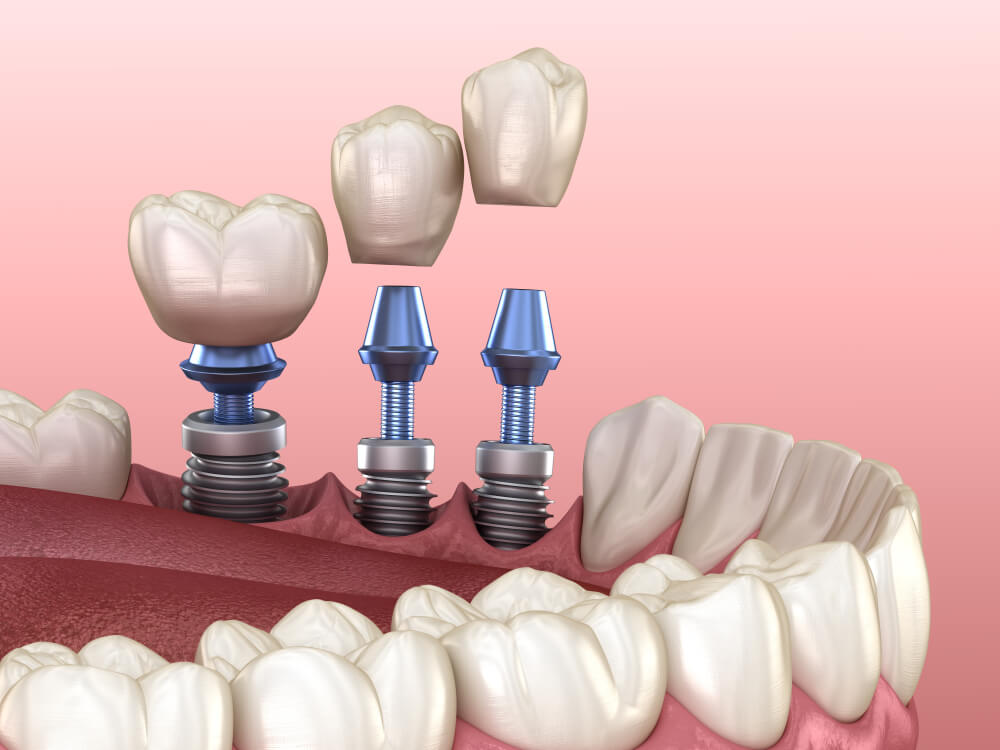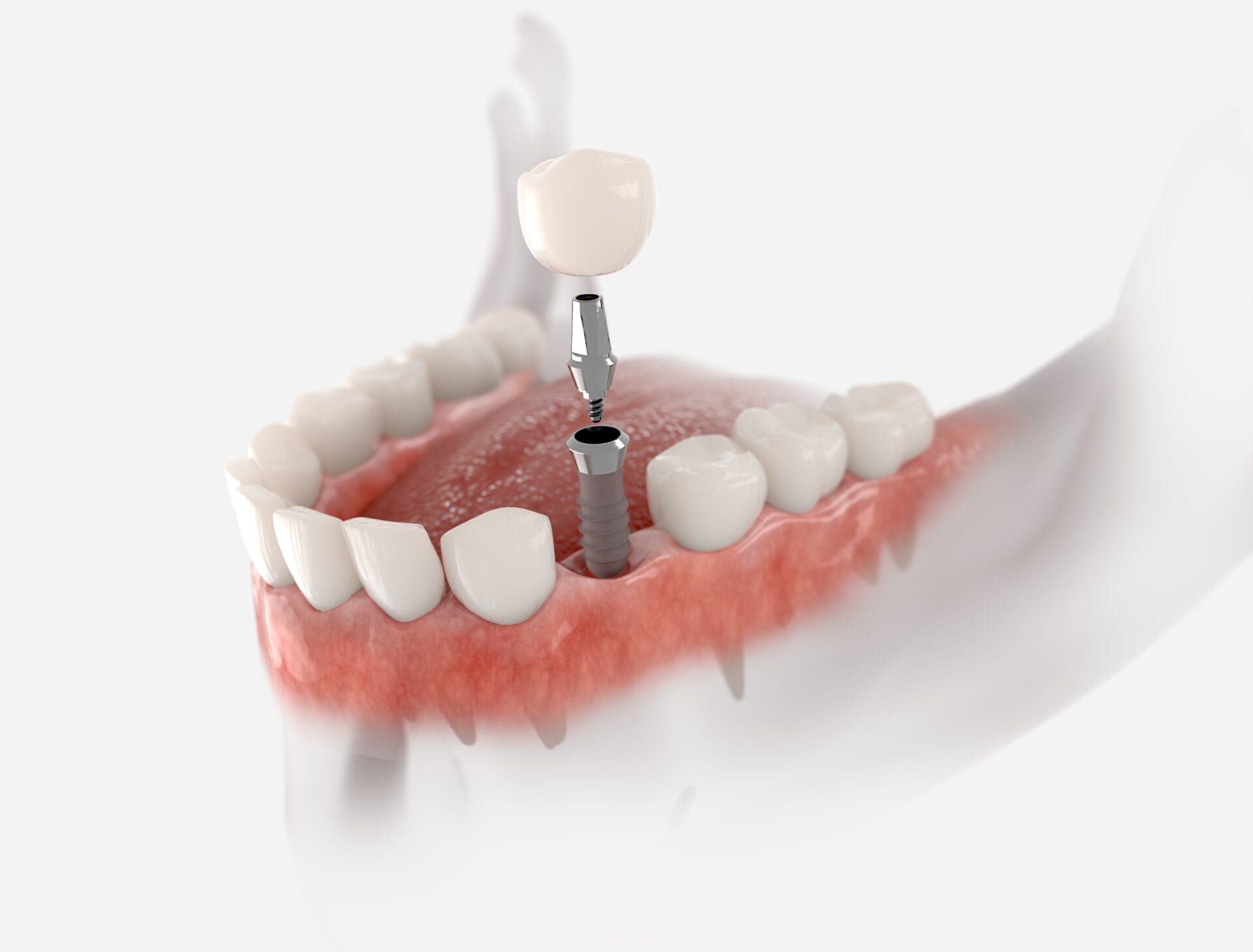Bring Back Functionality and Aesthetic Appeals: Dental Implants Kent Solutions
Bring Back Functionality and Aesthetic Appeals: Dental Implants Kent Solutions
Blog Article
Experience the most up to date Advancements in Dental Implants Innovation
As the area of dentistry continues to advance, the developments in dental implant technology have been absolutely nothing short of amazing. From making use of sophisticated products that enhance durability to the application of digital imaging for exact positioning, these advancements are changing the landscape of dental treatment. With minimally intrusive surgical methods and the personalization capabilities of 3D printing, people currently have actually access to customized options that were once unthinkable. The integration of technology is changing the performance of dental implants, guaranteeing enhanced outcomes and patient contentment.
Advanced Materials for Boosted Longevity
In the world of dental implants innovation, the combination of sophisticated products has dramatically contributed to enhancing toughness and longevity of these vital dental prosthetics. The use of products such as titanium alloys, zirconia, and ceramic compounds has actually revolutionized the area by offering boosted resistance, toughness, and biocompatibility to rust.
Titanium alloys are extensively used in oral implants as a result of their phenomenal strength-to-weight ratio, deterioration resistance, and compatibility with the body. These alloys ensure the security and long life of the dental implant by withstanding the pressures applied during speaking and eating, giving a reliable service for individuals looking for durable tooth replacements.
Zirconia, a kind of ceramic product, has actually gotten appeal for its biocompatibility and all-natural tooth-like look. Its high strength and resistance to wear make it an appropriate option for dental crowns and bridges, boosting the total aesthetic appeals and functionality of the implant.

Digital Imaging for Accurate Placement
The evolution of dental implants technology has better advanced with the assimilation of electronic imaging methods, making sure accurate positioning of these prosthetics for optimum useful and visual end results. Digital imaging plays an essential role in the planning and positioning of oral implants by offering comprehensive 3D images of the person's jawbone framework. This modern technology allows dentists to analyze bone thickness, find crucial structures, and plan the specific setting and angle for implant positioning with unparalleled accuracy.
By making use of electronic imaging, dental experts can produce virtual medical overviews that work as a roadmap throughout the implant positioning procedure. These overviews are personalized for every patient, taking into consideration their special makeup and the preferred end result. This level of accuracy not only boosts the success rate of oral implant procedures yet likewise lowers the danger of problems.
Furthermore, electronic imaging enables dental professionals to visualize the final prosthetic restoration before the real placement of implants, permitting meticulous preparation and ensuring that the end result meets the individual's aesthetic assumptions. On the whole, the combination of electronic imaging technology has actually changed the field of dental implants, offering people a more predictable, effective, and patient-specific therapy approach.

Minimally Invasive Surgical Methods


Improvements in medical techniques have actually brought about the development of minimally invasive techniques in the area of oral implantology. These techniques aim to minimize injury to the client, reduce recovery times, and enhance total treatment outcomes. Minimally intrusive operations involve smaller cuts, specialized instruments, and progressed imaging technologies to specifically place oral implants with marginal interruption to surrounding cells.
One secret aspect of minimally intrusive strategies is making use of directed surgery, where 3D imaging and computer-aided design software are employed to intend the implant placement with great precision. This permits an extra predictable end result and can commonly eliminate the demand for considerable flap surgical treatment.
Furthermore, advancements in products and dental implant design have actually also added to the success of minimally invasive methods. Implants with improved surface area residential properties promote faster osseointegration, reducing the recovery time called for prior to the prosthetic repair can be positioned.
3D Printing for Customized Solutions
Using 3D printing innovation in dental implantology enables the development of extremely customized remedies customized to individual person needs and physiological variations. This advanced modern technology allows oral specialists to develop and make dental implants with phenomenal accuracy and accuracy. By making use of digital imaging techniques, such as cone beam of light calculated tomography (CBCT), thorough 3D versions of the client's dental tooth cavity can be generated to assist the implant intending process.
One of the vital advantages of 3D printing in oral implantology is the capacity to create patient-specific implants that flawlessly fit the distinct makeup of each person. This individualized strategy helps enhance the general success and durability of the implant by making sure optimum fit and placement. Additionally, 3D printing allows for the manufacturing of intricate geometries and detailed frameworks that would be difficult or tough to achieve utilizing typical manufacturing approaches.
Moreover, 3D printing modern technology allows dental practitioners to simplify the implantation procedure, lowering surgery time and improving total person experience. With its capability to create tailored options rapidly and efficiently, 3D printing is revolutionizing the field of oral implantology, offering individuals ingenious treatment alternatives and enhanced outcomes.
Integrated Modern Technology for Improved Performance
Carrying out advanced technology in oral implantology improves functionality and accuracy, raising the standard of treatment for individuals going through dental implant treatments. Integrated technology plays an important role in improving the overall success and resilience of oral implants. One essential improvement is the combination of electronic scanning and imaging innovations, such as cone-beam computed tomography (CBCT) and intraoral scanners. These tools permit in-depth 3D imaging of the individual's dental frameworks, promoting accurate therapy preparation and dental implant positioning.
In addition, the combination of computer-aided design and computer-aided production (CAD/CAM) More Info innovation makes it possible for the production of personalized dental implant remediations with exceptional accuracy. CAD/CAM systems use electronic impacts to develop prosthetics that completely fit the person's unique anatomy, guaranteeing ideal convenience and functionality. Furthermore, making use of robotic-assisted surgery in implant placement improves precision and read this decreases the risk of human mistake.
Verdict
To conclude, the most current advancements in dental implants technology deal boosted longevity via innovative products, specific positioning with electronic imaging, minimally invasive surgical techniques, customized solutions with 3D printing, and boosted capability with incorporated innovation - Dental implants Kent. These innovations in oral implants modern technology are changing the area and giving people with even more reliable and efficient therapy options for restoring their smiles and dental health and wellness
The assimilation of technology is revolutionizing the capability of dental implants, promising boosted results and client complete satisfaction.
The development of dental implants modern technology has better progressed with the combination of digital imaging strategies, making certain accurate placement of these prosthetics for optimum functional and visual results. Minimally invasive surgical treatments involve smaller incisions, specialized tools, and progressed imaging innovations to exactly put oral implants with very little interruption to surrounding cells.
Implementing cutting-edge technology in oral implantology boosts capability and precision, raising the requirement of care for clients Check This Out going through dental implant procedures. Dental implants Kent. Integrated innovation plays a crucial function in boosting the general success and sturdiness of oral implants
Report this page